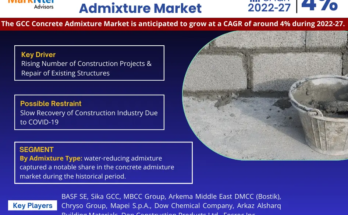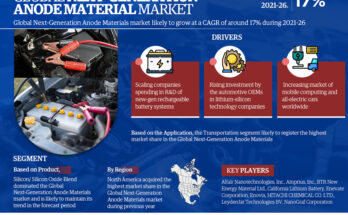Global Textile Coatings Market has valued at USD 6.13 billion in 2022 and is anticipated to grow in the forecast period with a CAGR of 4.97% through 2028. The Global Textile Coatings Market in 2023 showcases significant growth and innovation within the textile industry. The Global Textile coatings Market plays a crucial role in enhancing fabric properties, imparting functionalities, and expanding applications across various end-use industries.
Key Drivers-Textile Coatings Market
- Innovations in Coating Technologies
In an era characterized by rapid technological advancements, the global textile coatings market is undergoing a transformative phase, with innovations in coating technologies emerging as a powerful catalyst for growth.
One of the most significant breakthroughs in recent years is the integration of nanotechnology into textile coatings. Nanocoatings, consisting of nanoscale particles, offer unparalleled advantages, including enhanced durability, water repellency, and improved resistance to stains. These nanomaterials, when applied as coatings on textiles, create surfaces with unique properties, elevating the performance of fabrics across various applications.
To Download FREE Sample Pages of this Report📥 @ https://www.techsciresearch.com/sample-report.aspx?cid=20855
The rise of smart textiles is fueled by innovations in smart coating technologies. These coatings integrate sensors, conductive materials, and responsive polymers into fabrics, enabling them to interact with the environment or the wearer. Applications range from health-monitoring garments to temperature-regulating clothing. Smart coatings not only enhance the functionality of textiles but also contribute to the development of the Internet of Things (IoT) within the textile industry.
Innovations in phase change materials have opened new avenues for temperature-regulating textiles. Phase change coatings embedded in fabrics absorb, store, and release heat, providing a comfortable and adaptive experience for the wearer. This innovation is particularly valuable in sportswear, outdoor apparel, and workwear, where temperature control is crucial for performance and comfort.
Responding to the growing emphasis on sustainability, the development of biodegradable and eco-friendly coatings is reshaping the textile coatings market. Manufacturers are exploring plant-based and bio-sourced materials as alternatives to traditional coating components. These coatings not only reduce the environmental impact but also align with the preferences of environmentally conscious consumers.
- Expanding Applications in End-User Industries
The global textile coatings market is experiencing a remarkable surge in growth, driven by the expanding applications of coated textiles across a diverse array of end-user industries. From automotive interiors to healthcare and industrial applications, the versatility of textile coatings is unlocking new possibilities and driving demand.
The automotive industry stands out as a key contributor to the growing demand for textile coatings. Coated textiles are increasingly utilized for interior applications, ranging from upholstery and seat covers to headliners and door panels. The ability of coatings to enhance aesthetics, improve durability, and provide functional features such as stain resistance and UV protection has positioned them as indispensable in the automotive interior design landscape.
The healthcare industry has witnessed a surge in the adoption of coated textiles, particularly those featuring antimicrobial properties. In environments where hygiene is paramount, such as hospitals and clinics, textile coatings play a crucial role in preventing the spread of infections. Antimicrobial coatings on medical textiles, including bed linens, curtains, and surgical gowns, contribute to maintaining a sterile environment and ensuring patient safety.
Industrial applications represent a burgeoning segment for textile coatings. Protective clothing for workers in hazardous environments often incorporates coatings that provide flame resistance, chemical resistance, and protection against extreme temperatures. Additionally, industrial fabrics with specialized coatings find applications in sectors such as construction, oil and gas, and manufacturing, contributing to workplace safety and efficiency.
The demand for high-performance sportswear and outdoor apparel has driven the adoption of textile coatings. Coatings that offer water repellency, breathability, and durability enhance the functionality of sportswear, catering to the needs of athletes and outdoor enthusiasts. Whether it’s hiking, skiing, or cycling, coated textiles provide the necessary features for optimal performance and comfort.
- Performance Enhancement and Functional Textiles
The textile industry is undergoing a transformative shift as performance enhancement and functional textiles take center stage, driving the growth of the global textile coatings market. Beyond mere aesthetics, consumers now seek textiles that offer advanced functionalities, from moisture-wicking sportswear to flame-resistant industrial fabrics.
The integration of performance-enhancing features into textiles has become a cornerstone of innovation. Textile coatings play a pivotal role in elevating the performance of fabrics, offering properties such as enhanced durability, abrasion resistance, and improved color retention. This trend is particularly prominent in high-wear applications, including sportswear, workwear, and outdoor apparel, where textiles must withstand rigorous use while maintaining their integrity.
In the realm of sportswear and activewear, textiles with superior moisture management capabilities are highly sought after. Coatings that provide water repellency, moisture-wicking, and enhanced breathability contribute to the comfort and performance of athletes and outdoor enthusiasts. These functional textiles, often coated with advanced technologies, allow wearers to stay dry and comfortable even during intense physical activities.
The industrial sector places a premium on safety, and textile coatings are pivotal in meeting stringent safety standards. Fabrics used in industrial applications, such as protective clothing for workers, are often coated to impart flame resistance, chemical resistance, and other protective properties. This not only safeguards workers but also opens new avenues for the use of coated textiles in various industrial settings.
The global emphasis on hygiene has propelled the demand for antimicrobial textiles, especially in healthcare settings. Textile coatings with antimicrobial properties play a crucial role in preventing the spread of infections. Beyond healthcare, these coatings find applications in various sectors, including hospitality, where maintaining cleanliness and hygiene is paramount.
- Global Economic Expansion and Urbanization
The interconnected dynamics of global economic expansion and rapid urbanization are casting a transformative spell on industries worldwide. In the textile sector, the confluence of these forces is particularly evident, with the global textile coatings market emerging as a key beneficiary.
Urbanization brings with it a surge in construction activities, driving demand for textiles in various infrastructure applications. Textile coatings, known for enhancing the durability and performance of fabrics, are finding their way into construction textiles used in canopies, roofing, and geotextiles. As cities expand and modernize, the demand for innovative, coated textiles in construction is on the rise.
Urbanization is synonymous with increased mobility, and the automotive industry is a direct beneficiary. Textile coatings are integral to the production of automotive textiles, particularly in urban commuting applications. Coated fabrics used in vehicle interiors, upholstery, and automotive components contribute to both aesthetic appeal and enhanced functionality, aligning with the expectations of urban consumers.
Urban centers are hubs of economic activity and consumerism. The demand for high-quality, aesthetically pleasing textiles is heightened in urban environments. Textile coatings play a crucial role in meeting these expectations by imparting unique properties such as water resistance, stain resistance, and durability. Coated textiles in home furnishings, upholstery, and fashion cater to the discerning tastes of urban consumers.
The urban environment is increasingly becoming a testing ground for technological innovations. Textiles, infused with advanced coatings, play a part in this urban tech integration. From smart textiles with conductive coatings for wearables to textiles with reflective coatings for safety applications, the intersection of technology and textiles is a testament to the adaptability of the industry to urban challenges.
Key Players-Textile Coatings Market
- Arkema Group
- BASF SE
- Clariant AG
- Covestro AG
- Formulated Polymer Products Ltd
- Huntsman International LLC
- Impregilo UK Ltd
- Seyntex NV
- Solvay SA
- SRF Ltd
To Download FREE Sample Pages of this Report📥 @ https://www.techsciresearch.com/sample-report.aspx?cid=20855
Key Challenges-Textile Coatings Market
- Fluctuating Raw Material Prices
The textile coatings market is susceptible to fluctuations in raw material prices, impacting manufacturing costs and profit margins. Volatility in the prices of key components, such as resins and chemicals used in coatings, poses a challenge for manufacturers. Strategic planning and effective supply chain management become imperative to navigate these price fluctuations.
You may also read:
Benzoic Acid Market Analysis, Development [2028], Key Terms
India Ethanol Market – [2029] Growth, Trends & Forecast
Rubber Process Oil Market | [2028] Exploring Growth, Potential, and Future, Trends
Table of Content-Textile Coatings Market
- Product Overview
1.1. Market Definition
1.2. Scope of the Market
1.2.1. Markets Covered
1.2.2. Years Considered for Study
1.2.3. Key Market Segmentations
- Research Methodology
2.1. Objective of the Study
2.2. Baseline Methodology
2.3. Key Industry Partners
2.4. Major Association and Secondary Sources
2.5. Forecasting Methodology
2.6. Data Triangulation & Validation
2.7. Assumptions and Limitations
- Executive Summary
3.1. Overview of the Market
3.2. Overview of Key Market Segmentations
3.3. Overview of Key Market Players
3.4. Overview of Key Regions/Countries
3.5. Overview of Market Drivers, Challenges, Trends
- Voice of Customer
- Global Textile Coatings Market Outlook
5.1. Market Size & Forecast
5.1.1. By Value
5.2. Market Share & Forecast
5.2.1. By Polymer Type (Thermoplastics, Thermosets, Rubber, Others)
5.2.2. By Application (Clothing, Transportation, Medical, Construction, Others)
5.2.3. By Region
5.2.4. By Company (2022)
5.3. Product Market Map
5.3.1. By Polymer Type
5.3.2. By Application
5.3.3. By Region
- North America Textile Coatings Market Outlook
6.1. Market Size & Forecast
6.1.1. By Value
6.2. Market Share & Forecast
6.2.1. By Polymer Type (Thermoplastics, Thermosets, Rubber, Others)
6.2.2. By Application (Clothing, Transportation, Medical, Construction, Others)
6.2.3. By Country
6.3. North America: Country Analysis
6.3.1. United States Textile Coatings Market Outlook
6.3.1.1. Market Size & Forecast
6.3.1.1.1. By Value
6.3.1.2. Market Share & Forecast
6.3.1.2.1. By Polymer Type
6.3.1.2.2. By Application
6.3.2. Canada Textile Coatings Market Outlook
6.3.2.1. Market Size & Forecast
6.3.2.1.1. By Value
6.3.2.2. Market Share & Forecast
6.3.2.2.1. By Polymer Type
6.3.2.2.2. By Application
6.3.3. Mexico Textile Coatings Market Outlook
6.3.3.1. Market Size & Forecast
6.3.3.1.1. By Value
6.3.3.2. Market Share & Forecast
6.3.3.2.1. By Polymer Type
6.3.3.2.2. By Application



